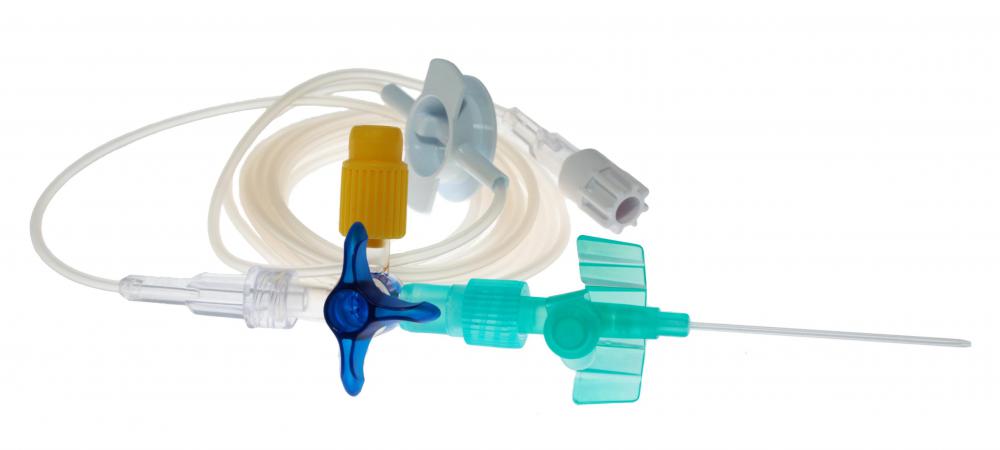At WiseGEEK, we're committed to delivering accurate, trustworthy information. Our expert-authored content is rigorously fact-checked and sourced from credible authorities. Discover how we uphold the highest standards in providing you with reliable knowledge.
What is an Epidural Block?
An epidural block, or epidural for short, is a type of regional anesthesia where the anesthetic is injected into a space around the spinal nerves, known as the epidural space. The lower limbs and pelvis can be numbed by this technique. An epidural block can be carried out without putting a patient to sleep as a general anesthetic would. It is commonly used for women who are giving birth, allowing them to remain conscious throughout the delivery yet getting rid of some pains of labor.
Administration of an epidural block generally involves having the patient either leaning over in a sitting position or lying on one side with the knees brought up toward the abdomen. In both cases, this means the spine is curved, opening up the gaps between the vertebrae so a needle can be inserted. Before the epidural block is carried out, local anesthesia is applied to the skin to minimize any discomfort. A larger needle is used for the epidural anesthesia and this is introduced into the epidural space by inserting it between two of the vertebrae in the lower back. The spinal nerves in the lower back supply feeling to the legs and pelvic area, so the anesthetic causes these areas to become numb.

Sometimes a single injection of anesthetic is all that is required, if the effects are to last for only a few hours before wearing off. If the epidural block is intended to last longer, then a thin tube known as a cannula is inserted through the needle and left in place while the needle is removed. The cannula may be attached to a pump so anesthetic can be continually infused during a long operation, or in cases where relief from pain is needed over a number of days, for example after some types of surgery. Occasionally, patients will be given a pump they can control themselves by pressing a button, and they can then adjust it to deliver exactly the amount of pain relief they need.
Following an epidural block, it is normal to be unable to move or feel the legs for a number of hours while the effect of the anesthetic wears off. It may be difficult to pass urine, so a tube called a catheter may be used to drain urine into a bag. Sometimes side effects such as nausea, low blood pressure or itching may be experienced but these can be treated, and possible long-term complications such as persistent numbness, infection or headaches are rare. Usually an epidural block is a relatively safe procedure without lasting problems.
AS FEATURED ON:
AS FEATURED ON:











Discuss this Article
Post your comments